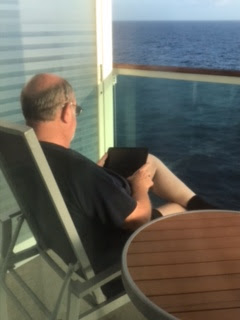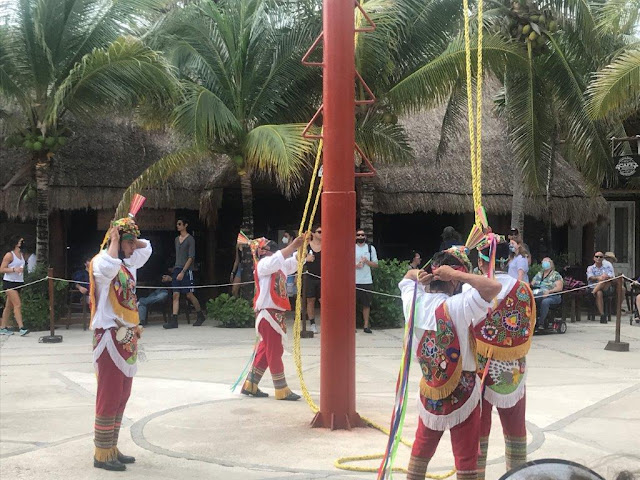So, well, some of you may know that I spent some time on Kwajalein Island, in Kwajalein Atoll, in the Marshall Islands, in the early 70s, as a kid, while my father was the Air Force liaison to the Army Base that the Navy supplied and the Air Force routinely bombed (or warheaded.)
Said island, and atoll, and region being relatively easily wrested from the grips of the Imperial Japanese in the first half of 1944, after a rather bitter struggle taking the Gilbert Islands away from said Imperial Japanese, re: Tarawa, Bloody Tarawa.
Having read the whole of the US Army History 'Green Book' on the seizure of the Gilberts and Marshalls, maybe 5-6 times (get the pdf here: Seizure of the Gilberts and Marshalls - U.S. Army Center of Military History or the whole entire catalog available here: U.S. Army in World War II Series - U.S. Army Center of Military History Seriously, if you are serious about the US involvement in WWII, the US Army realized that they needed to get stuff down on paper before they started losing too many people, so the Army assigned historians to collect data and interviews and assemble one of the most awesomely expansive and complete history of military operations ever, though the writing can be somewhat academic and there are a lot of 'useless data' if you're only interested in actual shoot-shoot history)
Where was I? Oh, yeah. Having read the book on the Gilberts and Marshalls many times, I thought I got the part about Naval Gunfire as it pertained to the Gilberts (woefully ineffective) and the Marshalls (completely effective, no problems, worked like a charm) correct when I have commented upon Naval Gunfire as it was used in other places, like during Operation Overlord and other places.
The specific issue was the range of the firing used by the US Navy in the Gilberts vs the Marshalls. And the issue came up with after-action review of the failures of said gunfire in the Gilberts and how to do it right in the Marshalls (and everywhere else, of course.)
So what went wrong in the Gilberts that they had to change to be successful in the Marshalls?
Well, here comes the point where I was woefully wrong, and I fully admit it. Time for ritual flogging and wearing of sack-cloth.
What I've assumed since the last time I read the Green Book (so called by historians because the hard copy versions were issued in, yes, green cloth covers (trivia, I know, but what's history without trivia?) was that in the Gilberts the US Navy stood way out of range and badly lobbed rounds upon the various islands and that is what made the gunfire ineffective while in the Marshalls the Navy sailed point blank up to the islands in the atolls and opened fired, point blank, and that was what made the Marshalls gunfire so effective.
Which, sadly to my ego, is woefully wrong.
Firstly, a discussion of what an atoll is. And how it is possible to sail a ship almost right up to an atoll and perform point-blank gunnery. This is possible because of the way atolls are formed. Take a glass, top upwards, submerge in a full sink until the rim is barely above water. That's basically what an atoll is. The rim of an extinct volcano that is poking mostly or partially out of water. Said rim can be either actual volcanic material as is found in Truk lagoon, where the jagged caldera still mostly pokes above the ocean, leaving a deep harbor with many entrances available for ships and fish and water and sea monsters and aliens to go in and out if they can get over whatever lip still remains under water. Or it could be mostly submerged with basically coral encrustations poking out from when the sea level was 10' or more higher than it is now (so take that, globull warming conspiracy freakazoids, the sea levels have risen and fallen longtime before Man ever stood up and scratched his privates in public) and thus leaving low coral islands surrounded by coral reefs with the occasional pass worn into said rim by the actions of water or space aliens or maybe those ancient flying DC-8 space ships the Scientologists talk about that nuked all of Earth's volcanoes... no, not kidding, that's one of the beliefs of theirs. In these style atolls the lagoon can be anywhere from barely passable for ships to really deep, and the passages can be anywhere from feet deep at high tide to deep enough to take battleships and carriers and other forms of naval ships.
In the Gilberts campaigns, such as Tarawa, Bloody Tarawa, the US Navy sailed right up to the islands and plastered them at point-blank range. Possible because the outer reef rim goes from median sea level (almost exposed in low tide, covered completely during high tide, exposed during the neap tide and you can go walking on the reef that is normally underwater, done it, it's fun, great way to collect all sorts of sea creatures.) And because they were point blank, firing point blank, the rounds were bouncing off the coral and flying into the inner lagoon or beyond, which, when you think about it, is rather more dangerous to ships and people in and on the water on the other side of the island, rather than being dangerous to people on the island (unless your luck sucks so bad you happen to be the grease spot where some 14" shell went skipping across the island.)
So, between the Gilberts campaign and the Marshalls campaign, the various US Forces (US Navy, US Army, US Marine Corps, US Army Air Force (possibly even the US Coast Guard)) sat down and reviewed what worked and why, what didn't work and why, and how to make what worked better, and how to fix what didn't work so it did work.
The result? Use more tracked amphibians, more amphibious trucks, get tanks on right away, get supplies landed ASAP even if that means landing bulldozers under fire in order to clear lanes and landing zones. Capture secondary islands and turn them into artillery platforms for the support of the attack on the primary island. AND (getting to naval gunfire) move the ships back so they can do plunging fire and have the ability to move close to take on individual targets with point blank AP fire (like a particularly nasty bunker that just won't give up) but mostly lob and use the extremely accurate naval fire control to do its job of lobbing death and destruction.
So, well, in the Marshalls, starting with Kwajalein Atoll and the attacks at the twin islands of Roi-Namur on the northeast corner of the atoll and the attack at Kwajalein Island on the southeast corner of the atoll, the US Navy did what bitter lessons in the Gilberts and especially at Tarawa, Bloody Tarawa, taught. Hanging back and blazing away with as much fire as possible and just flattening anything that sticks above the ground.
Post battle analysis of the attack on Kwajalein Island came up with artillery killed probably 75% of the enemy, and shocked the rest of them into very broke resistance, while destroying most of the enemy's equipment and fortifications.
So, well, Mea Culpa. My bad.
What made me change my story? I watched a youtube video. The "From the Battlefields" channel. Channel here: From the Battlefields - YouTube
And the video itself? Battle of Kwajalein 1944 - Applying Lessons Learned - YouTube
Sorry, our wonderful hosting site won't let me bring up the video directly so you'll have to click on it.
Good history. There's something for everyone on it.
And the part about the Japanese torpedo magazine on Namur Island, well, subtle hint. DON'T THROW SATCHEL CHARGES INTO A TORPEDO MAGAZINE!!!! Seriously, watch the video and see for yourself. Big kaboom, almost-Earth Shattering Kaboom.
Other than that, hope you all are enjoying the 6th Day of Christmas and the last of this year. Let's hope the remaining 6 days are as good or better than the last 6 and the two previous to it and that the new year is better, safer, less stupid filled.
As to the font, I've been trying to find one that is readable. "Normal" size is too small, "Medium" is barely any better, gonna try "Large" and may have to fix it





















